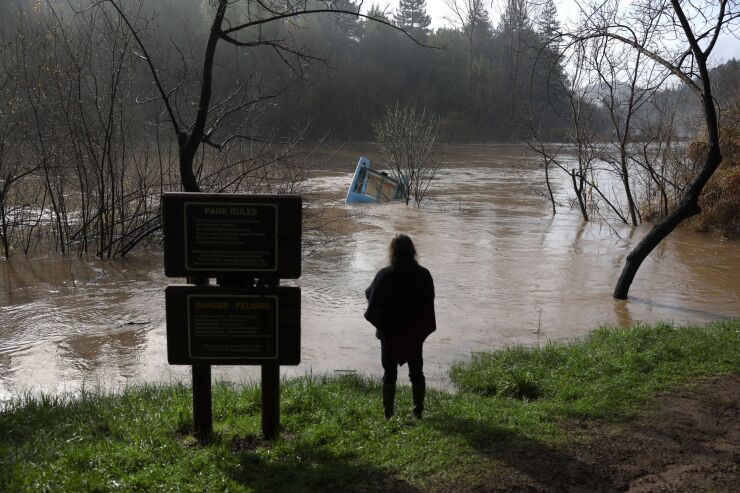IRS extends tax deadline until Oct. 16 in disaster areas through much of California

The Internal Revenue Service has extended the tax deadline for disaster area taxpayers in most of California, and parts of Alabama and Georgia as well, until Oct. 16.
The IRS announced the extension Friday as Southern California braces for blizzards, including in the mountains outside Los Angeles, for the first time since 1989. The state has endured catastrophic levels of flooding, as well as mudslides, landslides and severe winter storms this year after a series of wildfires last year. Alabama and Georgia also endured severe storms and tornadoes last month. In January, the IRS announced extensions of the tax deadline until May 15 for all three states and has now expanded the deadline through Oct. 16.
In January and February, the IRS included taxpayers who reside or have a business in Alameda, Alpine, Amador, Butte, Calaveras, Colusa, Contra Costa, Del Norte, El Dorado, Fresno, Glenn, Humboldt, Inyo, Los Angeles, Madera, Marin, Mariposa, Mendocino, Merced, Monterey, Napa, Nevada, Placer, Sacramento, San Benito, San Joaquin, San Luis Obispo, San Mateo, Santa Barbara, Santa Clara, Santa Cruz, San Diego, San Francisco, Siskiyou, Solano, Sonoma, Stanislaus, Sutter, Tehama, Trinity, Tulare, Tuolumne, Ventura and Yolo counties in California as qualifying for tax relief.
Individuals and households that reside or have a business in Butts, Henry, Jasper, Meriwether, Newton, Spalding and Troup counties in Georgia, and Autauga and Dallas counties in Alabama could also qualify for tax relief. The current list of eligible localities is always available on the Tax Relief in Disaster Situations page on IRS.gov.

Justin Sullivan/Getty Images via Bloomberg
The extra relief postpones until Oct. 16, a number of tax filing and payment deadlines, including those for most calendar-year 2022 individual and business returns. That includes individual income tax returns that originally came due on April 18, along with different business returns, normally due on March 15 and April 18, and returns of tax-exempt organizations, typically due May 15. That means eligible taxpayers will also get until Oct. 16 to make 2022 contributions to their IRAs and health savings accounts.
Farmers who choose to forgo making estimated tax payments and normally file their returns by March 1 will now have until Oct. 16, 2023, to file their 2022 return and pay any tax due.
The Oct. 16 deadline also applies to the estimated tax payment for the fourth quarter of 2022, originally due Jan. 17, 2023. Therefore, taxpayers can skip making this payment and instead include it with the 2022 return they file, on or before Oct. 16.
The Oct. 16 deadline also applies to 2023 estimated tax payments, usually due April 18, June 15 and Sept. 15. It also applies to the quarterly payroll and excise tax returns normally due on Jan. 31, April 30 and July 31.
Taxpayers in the affected areas don’t need to file any extension paperwork, and they don’t need to call the IRS to qualify for the extended time. The IRS automatically provides filing and penalty relief to any taxpayer with an IRS address of record located in the disaster area. Therefore, taxpayers don’t need to contact the agency to get this relief. However, if an affected taxpayer receives a late filing or late payment penalty notice from the IRS that has an original or extended filing, payment or deposit due date falling within the postponement period, the taxpayer should call the number on the notice to have the penalty abated.
The IRS said it would work with any taxpayer who lives outside the disaster area but whose records necessary to meet a deadline occurring during the postponement period are located in the affected area. Taxpayers qualifying for relief who live outside the disaster area need to contact the IRS at (866) 562-5227. That includes workers helping with relief activities who are affiliated with a recognized government or philanthropic organization.
Individuals and businesses in a federally declared disaster area who suffered uninsured or unreimbursed disaster-related losses can opt to claim them on either the return for the year the loss occurred or the return for the prior year. See Publication 547, Casualties, Disasters and Thefts for details. For information on disaster recovery efforts from the Federal Emergency Management Agency, visit disasterassistance.gov.


